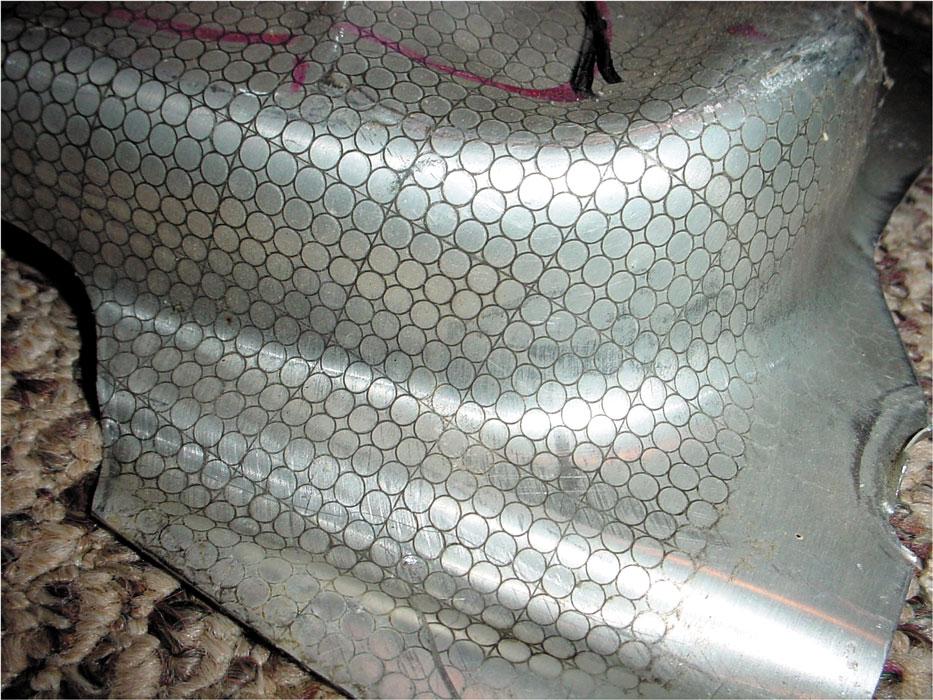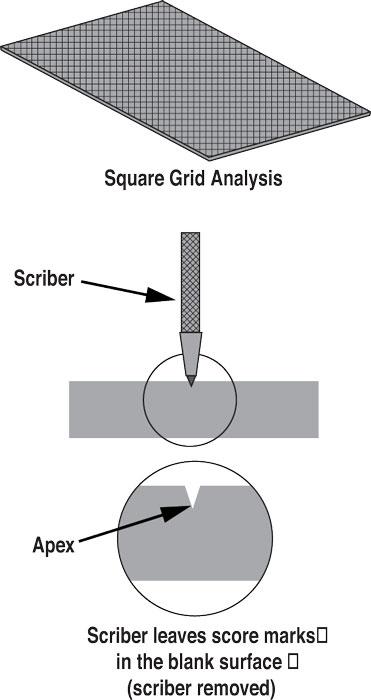Contributing Writer
- FMA
- The Fabricator
- FABTECH
- Canadian Metalworking
Categories
- Additive Manufacturing
- Aluminum Welding
- Arc Welding
- Assembly and Joining
- Automation and Robotics
- Bending and Forming
- Consumables
- Cutting and Weld Prep
- Electric Vehicles
- En Español
- Finishing
- Hydroforming
- Laser Cutting
- Laser Welding
- Machining
- Manufacturing Software
- Materials Handling
- Metals/Materials
- Oxyfuel Cutting
- Plasma Cutting
- Power Tools
- Punching and Other Holemaking
- Roll Forming
- Safety
- Sawing
- Shearing
- Shop Management
- Testing and Measuring
- Tube and Pipe Fabrication
- Tube and Pipe Production
- Waterjet Cutting
Industry Directory
Webcasts
Podcasts
FAB 40
Advertise
Subscribe
Account Login
Search
Die Science: Circle grid analysis for diemakers
- By Art Hedrick
- August 25, 2017
- Article
- Bending and Forming
Circle grid analysis (CGA) has long been used to help determine the forming severity of a stretched or draw product. Stampers and die builders use this technology to help decrease the probability of part failure such as splits and wrinkles.
No doubt, CGA can be used to help solve for splits during the stages of die tryout and production.
What Is CGA?
During CGA, a blank is etched electrochemically with a pattern of perfectly round circles and later deformed using the same variables used for high-volume production. The deformation of each circle then is measured using either a special camera system or a simple Mylar® scale, expressed as a percentage of change, and plotted on a forming limit diagram (FLD).
The FLD is a representation of the metal’s deformation limits based on two primary values: the metal’s thickness and its n value, or work hardening exponent.
By knowing how the metal has been deformed as well as its forming limits, you can adjust process variables to ensure that the process is robust. In simple terms, CGA is a way of measuring the forming severity of a formed part (see Figure 1 ).
Square Grid Versus Circular Grid
Those of you who have been in the stamping or die building business for numerous years might say, “Circle grid analysis is nothing new to me; I was dong that 40 years go. We would spare blue dye on a blank, let it dry, scribe a series of squares on the surface, and then deform the blank and analyze the metal flow patterns.”
It’s true that square grind analysis helped determine metal flow patterns, but no method was available at the time to measure each deformed square accurately. This prohibited users from determining the forming severity of the part. Today, of course, new software and special cameras can do this.
Keep in mind that scribing a pattern onto a blank leaves a score mark, which could propagate a split (see Figure 2 ).
Understanding How Metal Deforms
To understand how CGA can be used to solve for splits, you first must understand how metal deforms. The three primary modes of deformation are:
- Plane strain— starching the metal in only one direction during the simple bending process.
- Biaxial stretch — stretching the metal positively in two directions.
- Draw — stretching the metal in one direction while comprising it in the opposite direction.
The longest portion of the deformed circle is the major axis tells you the major strain direction (see Figure 3 ).
Steel that is starched or strained in one direction will not elongate as far as steel that is stretched in both directions (see Figure 4 ). Therefore, the thinnest area of a part might not be the area most likely to fail. This is an important fact for troubleshooting draw dies and puts a new spin on problem-solving techniques.
CGA can help you determine in which strain state the metal is failing. For example, assume you have a split in a part and have determined the steel is falling in plane strain (no change in the the minor axis, and a positive change in the major axis). You can analyze the major strain direction and see what you can do to stretch the metal more in the minor axis. This may require adding a draw bead or metal gainer in an area that will force the metal to be cut out as scrap ( see Figure 5 ).
You don’t have to do a full-blown CGA to determine corrective action. Spraying blue dye on your blank, scribing some circles with a pair of dividers, and measuring how the circle has deformed will help you to determine the stain state and direction. Remember, you’re not trying to predict the forming severity of the part; you’re just trying to eliminate the split.
Let It Flow
CGA can be used to determine real flow patterns and how the metal is deforming, which can help you determine both the root cause of the failure and the solution. CGA is not just for the guys in the metal lab. Use it to help you to make data-based decisions regarding corrective action.To remain competitive, today’s tooling professionals have to abandon the trial-and-error method of solving problems and start using more databased processes. Diemaking and troubleshooting is not an art; it is a science. Lose the diemaker title and become a dieologist.
Until next time… Best of luck!
About the Author

Art Hedrick
10855 Simpson Drive West Private
Greenville, MI 48838
616-894-6855
Related Companies
subscribe now

The Fabricator is North America's leading magazine for the metal forming and fabricating industry. The magazine delivers the news, technical articles, and case histories that enable fabricators to do their jobs more efficiently. The Fabricator has served the industry since 1970.
start your free subscription- Stay connected from anywhere

Easily access valuable industry resources now with full access to the digital edition of The Fabricator.

Easily access valuable industry resources now with full access to the digital edition of The Welder.

Easily access valuable industry resources now with full access to the digital edition of The Tube and Pipe Journal.
- Podcasting
- Podcast:
- The Fabricator Podcast
- Published:
- 04/16/2024
- Running Time:
- 63:29
In this episode of The Fabricator Podcast, Caleb Chamberlain, co-founder and CEO of OSH Cut, discusses his company’s...
- Trending Articles
Tips for creating sheet metal tubes with perforations

Are two heads better than one in fiber laser cutting?

Supporting the metal fabricating industry through FMA

JM Steel triples capacity for solar energy projects at Pennsylvania facility

Omco Solar opens second Alabama manufacturing facility

- Industry Events
16th Annual Safety Conference
- April 30 - May 1, 2024
- Elgin,
Pipe and Tube Conference
- May 21 - 22, 2024
- Omaha, NE
World-Class Roll Forming Workshop
- June 5 - 6, 2024
- Louisville, KY
Advanced Laser Application Workshop
- June 25 - 27, 2024
- Novi, MI





























